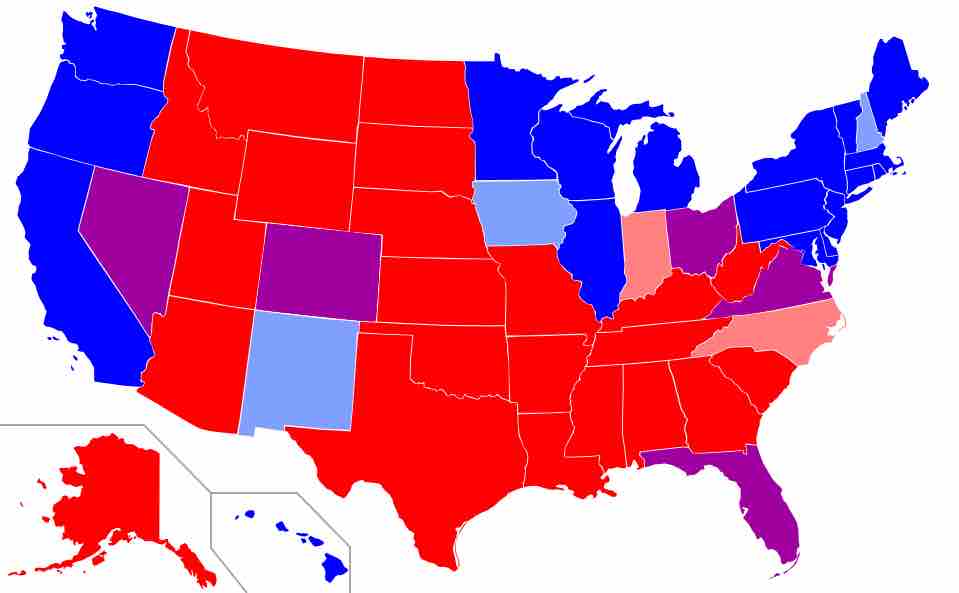During the 2000 US presidential election, the term "red states" was coined to mean those states whose residents primarily vote for the Republican Party and "blue states" as those states whose residents primarily vote for the Democratic Party . The terms have been expanded since 2000 to differentiate between conservative-leaning states, depicted in red, and liberal-leaning states, depicted in blue.

Red States and Blue States
News media frequently display maps in blue, red, and purple to indicate primarily Democratic-voting states, Republican-voting states, and middle ground states.
The association of states with colors to indicate their party voting preferences was not a new phenomenon prior to the 2000 presidential election. In fact, the advent of color television encouraged many television news reporters to depict state voting preferences through color-coded electoral maps. The 2000 presidential election, however, was the first time that red became the standardized color for the Republican Party and blue became the standardized color for the Democratic Party. Previously, color schemes differed across networks. For instance, in the 1980 presidential election NBC used blue for predominately Democratic-voting states and red for predominately Republican-voting states while ABC employed the opposite color scheme. Other networks alternated red and blue between the Democratic and Republican Parties every four years.
The 2000 presidential election proved significant in standardizing red and blue states with the Republican and Democratic Parties, respectively, because of the confusion surrounding the results of the election. Major media outlets started conforming to the same color scheme because the electoral map was continually in view and conformity created easy viewer comprehension. The association of blue with Democrats and red with Republicans is now part of the lexicon of American journalism and has informally been used by each party. Interestingly, though, there was no coordinated media effort to designate Democratic states blue and Republican states red on the 2000 election night and neither party's national committee has officially accepted the red and blue color designations.
Despite the nearly nationwide acceptance of Republican red states and Democratic blue states, the paradigm has come under criticism. Some argue that assigning partisanship to states is only useful in understanding voting preferences in the Electoral College. The Republican and Democratic Parties within a given state may have platforms that depart from national party platforms. Such a situation can lead a state to favor one party in state and local elections and another party in presidential elections. The designation of states as either being red or blue also ignores those states that are closely divided between Democratic and Republican candidates. Another criticism of the red state-blue state paradigm is that it has not been entirely predictive of how states will vote. For example, in the 2008 presidential election Democratic candidate Barack Obama captured the majority vote in many red states that had not voted Democratic in many years, such as North Carolina, Indiana, and Virginia.